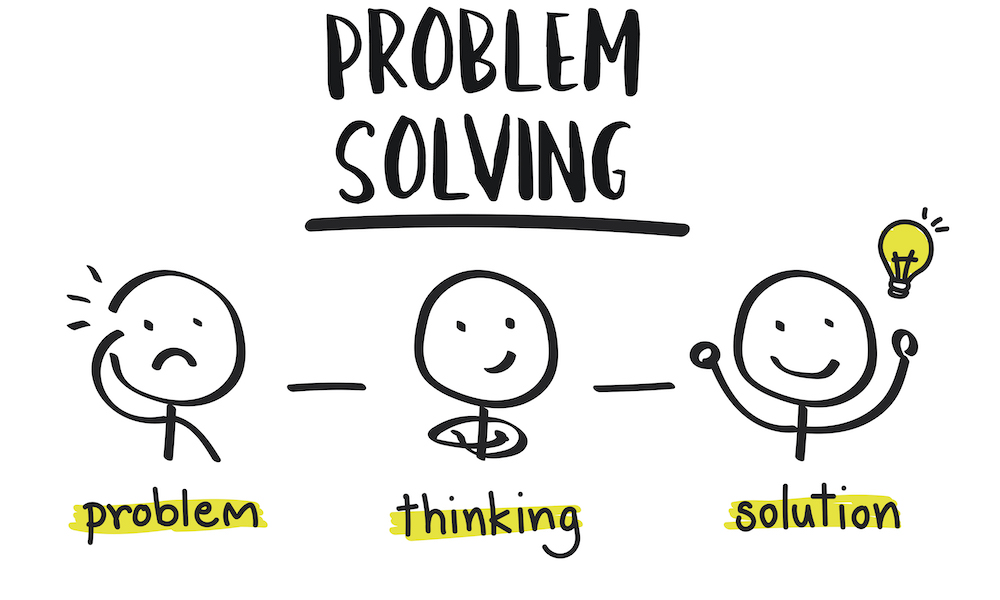
Effective problem-solving is a crucial skill that can help you achieve your goals and succeed in your endeavors, regardless of the industry you work in or the difficulties you face. If you approach problems in a structured way, you can solve them more efficiently and with less effort, and you can make decisions that lead to good outcomes.
In this article, we’ll examine the essential steps in problem-solving effectively and offer advice and techniques to help you get the most out of your decision-making.
Step 1: Define the Problem
Any process for solving a problem must begin with defining the issue at hand. This involves identifying the issue at hand, understanding its underlying causes, and setting clear boundaries around the problem. Without a clear understanding of the problem, it’s difficult to identify effective solutions or make sound decisions.
Spend some time gathering information, talking to people who have experience in the field, and looking at the situation from various angles in order to define the issue. You may be able to understand the problem more thoroughly and pinpoint its root causes as a result.
Step 2: Generate Potential Solutions
Once you have a clear understanding of the problem, it’s time to brainstorm potential solutions. This entails coming up with as many ideas as you can without judging or evaluating them just yet. You can use brainstorming either individually or in a group setting, and it can aid in the discovery of fresh approaches to a challenge.
Think creatively and carefully about a variety of options when coming up with potential solutions, even if they seem improbable or outlandish. This can help you expand your thinking and identify new opportunities for success.
Step 3: Evaluate the Options
It’s time to assess each option after compiling a list of potential solutions based on its potential efficacy, practicality, and viability. This involves weighing the pros and cons of each approach and considering the risks and benefits of each option.
Consider factors like cost, timeline, resources needed, and potential impact on the overall problem when evaluating potential solutions. This can help you identify the most promising solutions and make informed decisions about how to proceed.
Step 4: Choose a solution
After evaluating your options, it’s time to select the best solution. This entails choosing the solution that is both feasible and doable in practice while also being most likely to solve the issue. To create a more successful strategy, it may occasionally be necessary to combine or modify a number of potential solutions.
When selecting a solution, it’s crucial to have a clear implementation strategy that includes timelines, available resources, and any necessary communication or teamwork with others. This can make it easier to make sure that the solution is applied successfully and that any problems are dealt with as they come up.
Step 5: Implementing the Solution
It’s time to put the solution you found into practice. This involves taking steps to resolve the problem, making changes to a process or system, or communicating with others to facilitate the solution. It is essential to have a detailed implementation plan that covers all necessary communication and teamwork with other parties, as well as timelines and resources.
When putting the solution into practice, be ready to adjust as necessary and keep a close eye on the results. This can assist you in finding any problems that may crop up during implementation and ensuring that the solution is fulfilling its intended purposes.
Step 6: Monitor Progress
Once the solution has been implemented, it’s important to monitor progress and assess whether the problem has been fully resolved. This entails assessing how well the solution is working, making any necessary modifications, and keeping an eye on the situation until the issue is completely resolved.
Monitoring the implementation process can help find any problems that may arise and can also help make sure the solution is accomplishing the desired goals and objectives.
It takes a combination of analytical thinking, creativity, and strategic decision-making to solve problems effectively. A structured approach will help you identify problems more quickly, find solutions, make wise decisions, and accomplish your objectives.
There are several other suggestions and methods that can aid in efficient problem-solving in addition to the six steps mentioned above. A few of these are
Divide the issue into manageable chunks: By doing this, the issue can be made more manageable and simpler to resolve.
Use data and evidence: To help you make decisions, collect as much information and proof as you can.
Examine various viewpoints: Seek advice from people who may have an alternative viewpoint or specialized knowledge to share.
Be open to feedback: Be willing to listen to feedback and adjust your approach as needed.
Practice active listening: When speaking with others, be sure to pay attention to what they are saying and try to understand where they are coming from.
Be persistent: Solving problems can be difficult and time-consuming, but with perseverance and persistence, you can find solutions to even the most difficult problems.
You can more easily identify problems, solve them, make wise decisions, and accomplish your goals by using these tricks and techniques and adopting a methodical approach to problem-solving. Keep in mind that problem-solving is a skill that can be improved over time, and with practice, you can become a better problem-solver and decision-maker.
